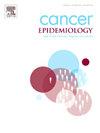Applied first-line systemic treatments, treatment modifications and outcomes in non-oncogenic metastatic non-small cell lung cancer in the Netherlands in 2019–2020: A nationwide study
IF 2.4
3区 医学
Q3 ONCOLOGY
引用次数: 0
Abstract
Background
The treatment landscape for patients with metastatic non-small cell lung cancer (mNSCLC) is rapidly evolving as new therapies are continually introduced. This study aimed to provide a contemporary overview of how patients diagnosed with mNSCLC in the Netherlands are treated in routine clinical practice, how applied systemic treatments are tolerated and with which overall survival (OS).
Methods
This nationwide retrospective study utilised data from the Netherlands Cancer Registry (NCR) complemented by electronic health records data of patients diagnosed with stage IV non-oncogenic mNSCLC in the years 2019–2020. First-line (1 L) treatments and corresponding overall survival (OS) were identified and compared across hospital types (academic, teaching, general), along with a multivariable analysis of 1 L treatment, patient, and tumour characteristics. In a subset of seven teaching hospitals, dose adjustments, early discontinuations and follow-up treatments were also assessed together with ESMO guideline adherence based on ECOG scores and levels of PD-L1 tumour expression.
Results
The total sample comprised 9511 patients (56 % male and mean age 68 years) of which 4485 (47 %) received best supportive care (BSC) only. The most frequently applied 1 L systemic treatment was chemo-immunotherapy with 51 % one-year survival. Starting any 1 L systemic treatment was more frequent among patients with younger age, better performance status, PD-L1 > 50 %, and those with their diagnosis established in an academic hospital. Chemotherapy was discontinued early (<4 cycles) in 46 % of patients with 1 L chemotherapy and 34 % of patients with chemo-immunotherapy. Guideline adherence was highest in patients with ECOG1 and PD-L1 1–49 % (76 %) and lowest in the ECOG > = 2 and PD-L1 1–49 % group (30 %).
Conclusions
Best supportive care over systemic treatment and chemotherapy treatment modifications are common in patients with mNSCLC. Presenting information to patients about these outcomes can support shared-decision making.
2019-2020年荷兰非致瘤性转移性非小细胞肺癌的一线全身治疗、治疗修改和结果:一项全国性研究
随着新疗法的不断引入,转移性非小细胞肺癌(mNSCLC)患者的治疗前景正在迅速发展。本研究旨在提供当代荷兰诊断为小细胞肺癌的患者如何在常规临床实践中治疗,如何耐受应用全身治疗以及总生存期(OS)。方法:这项全国性的回顾性研究利用了荷兰癌症登记处(NCR)的数据,并辅以2019-2020年诊断为IV期非致瘤性小细胞肺癌患者的电子健康记录数据。确定一线(1 L)治疗方法和相应的总生存期(OS),并对不同医院类型(学术、教学、普通)进行比较,同时对1 L治疗、患者和肿瘤特征进行多变量分析。在七家教学医院中,根据ECOG评分和PD-L1肿瘤表达水平,还评估了剂量调整、早期停药和随访治疗以及ESMO指南的依从性。结果共9511例患者(56 %男性,平均年龄68岁),其中4485例(47 %)仅接受最佳支持治疗(BSC)。最常用的1 L全身治疗是化学免疫治疗,一年生存率为51% %。开始1 L全身治疗的患者年龄较小,身体状况较好,PD-L1 >; 50% %,以及在学术医院确诊的患者。1次 L化疗的患者中有46% %提前停药(4个周期),化疗免疫联合治疗的患者中有34% %提前停药。ECOG1和PD-L1 1-49 %患者的指南依从性最高(76 %),ECOG >; = 2和PD-L1 1-49 %组的指南依从性最低(30 %)。结论在小细胞肺癌患者中,最佳支持治疗优于全身治疗和化疗治疗修改。向患者提供有关这些结果的信息可以支持共同决策。
本文章由计算机程序翻译,如有差异,请以英文原文为准。
求助全文
约1分钟内获得全文
求助全文
来源期刊

Cancer Epidemiology
医学-肿瘤学
CiteScore
4.50
自引率
3.80%
发文量
200
审稿时长
39 days
期刊介绍:
Cancer Epidemiology is dedicated to increasing understanding about cancer causes, prevention and control. The scope of the journal embraces all aspects of cancer epidemiology including:
• Descriptive epidemiology
• Studies of risk factors for disease initiation, development and prognosis
• Screening and early detection
• Prevention and control
• Methodological issues
The journal publishes original research articles (full length and short reports), systematic reviews and meta-analyses, editorials, commentaries and letters to the editor commenting on previously published research.
 求助内容:
求助内容: 应助结果提醒方式:
应助结果提醒方式:


